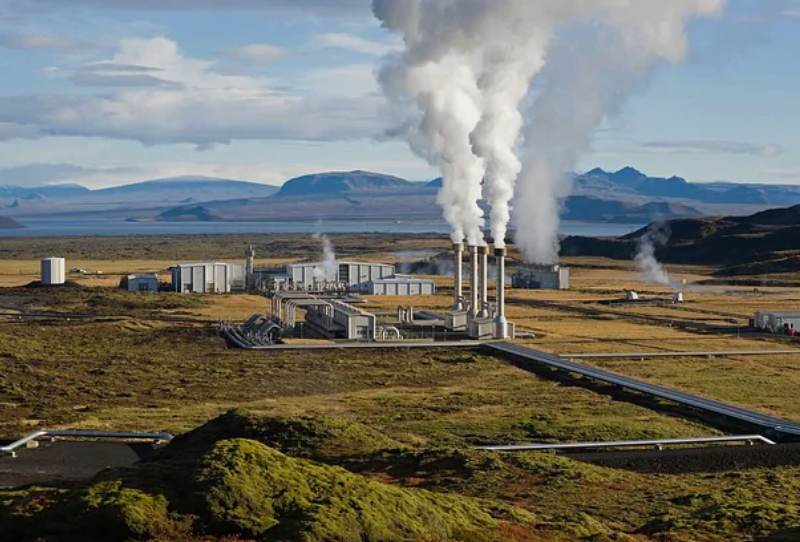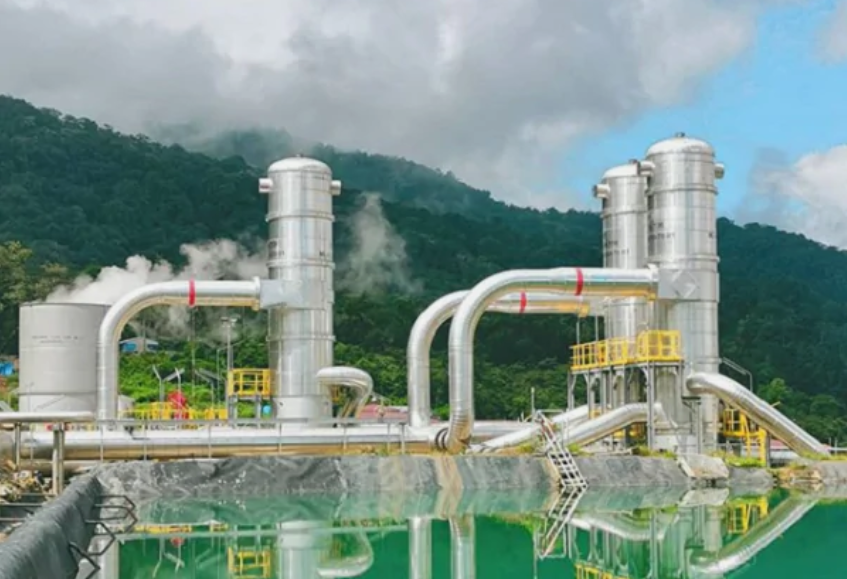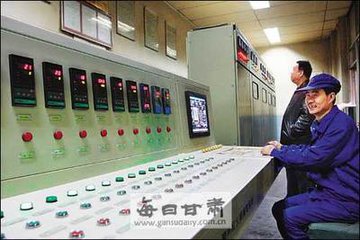
解释地热能的利弊
通常,可再生能源既有积极的一面,也有消极的一面。它们之所以出色,是因为这些资源中的大多数在世界范围内广泛分布,因为它们几乎不会耗尽,并且因为其使用不会破坏环境。它们不会产生大量电能,而且大多数可再生资源都容易随时间变化,这是其负面影响的一部分。
对于大多数可再生能源,有必要在重要地区(太阳能或风能发电站)安装电厂,这需要大量的建筑材料和大量的资金,即使由于费用低廉而花费了很多时间开发。
由于这些原因,可再生能源的使用是一个需要很多考虑和准确性的问题。
地热能的主要优势
·永不耗尽
使用化石燃料(例如煤,天然气或石油产品)的发电厂在很大程度上取决于这些物质的供应。危险不仅在于供应突然中断,还在于燃料价格突然上涨。例如,1970年代的燃料危机迫使电力运输和替代能源的发展。
地球核心的热量几乎不会耗尽。核心温度约为6,000°C。无需担心人类会以任何方式影响这一点。
·稳定
太阳能和风能取决于天气状况。没有风或没有阳光,就意味着没有生产,站会把它们储存在蓄能器中的东西散发出去。储存此能量的电池容量有限。如果无风或无阳光的天气持续很长时间,则一段时间内将不会有电。
核心会产生大量的24/7热量。井井有条的发电站可以正常运行,并且在任何天气,白天或夜晚,任何季节都可以发电。
·电站所需面积较小
向基础设施很少或很少的偏远地区供电一直是一个问题。缺乏适当的宽阔道路,丘陵或山区景观-这些都是阻碍传统发电厂创建的重大障碍。
地热能最重要的优势之一就是几乎在任何地方都可以使用。热源实际上位于地下。地上部分仅由带有涡轮机和发电机的机房以及冷却塔组成。与适当的太阳能发电厂所需的广阔领域相比,它们在一起所需的空间很小。
· 环保
与以大量CO2污染大气而闻名的传统发电站相比,地球核心的热量产生的能量非常干净。只有核电厂释放的二氧化碳更少。但是,他们的问题在于放射性废物。
· 允许矿物提取
取决于区域,来自地下并旋转涡轮的蒸汽可能包含各种气体和矿物质。例如,在意大利,蒸汽带走了大量的硼酸溶液。
地热能的主要缺点
如前所述,使涡轮旋转的蒸汽可能包含多种溶液,气体和矿物质。来自地下深处的蒸汽不是用饮用水制成的。它包含站点所在的地壳特定部分所特有的元素。这些元素和化合物可能包含铅,镉,砷,硫,锌,氨,苯酚等。如果此类解决方案到达当地流域,则会造成环境灾难。

正确遵守所有安全措施后,进入大气的蒸汽会通过特殊的过滤器。冷凝水及其所有溶液被倒回钻孔中。但是,在不可抗力的情况下,这样的站点会损害生物圈。
·巨额预付款
建筑物的成本是地热能最大的弊端之一。尽管构造相对简单,但这种发电厂在建造阶段却相当昂贵。它需要对位置,其浮雕和地下岩层进行彻底的分析和调查。由于必须打深井才能达到所需温度,因此孔的深度也可能影响成本。
·生产率相对较低
目前,地热发电厂的发电量少于水力发电站,核电站或普通热电厂。许多钻孔只能释放出足够的能量,仅用于小规模的沉降。
有必要比较地热能的利弊,看看哪一个会比另一个更重要。目前,许多国家都存在利用堆芯热量的发电站。他们的能力足以满足一部分人口的用电需求。
其余的由传统的火力,核能或水力发电站提供。这样的站在地震活动频繁的地区非常有效。最好的例子是冰岛,地壳的厚度使植物比其他国家更容易到达地球内部的热量。
在冰岛和日本,深层供暖的数量可直接用于道路,衣服和民居的加热。萨尔瓦多的全部电源供应中约25%来自地球核心的热量。
为了促进可再生能源的使用,应彻底评估地热能的利弊。从化石燃料的消耗速度来看,不久之后,人类将需要转向可再生能源。地热能将成为未来的理想能源存储。
Geothermal Energy Pros And Cons
Evelyn Bankole Alternative methods of producing electricity – from waves, wind, solar radiation, or the warmth of the Earth’s core – are thought to be our future. Still, geothermal energy pros and cons are a very hot talking point in expert circles. Environmentally friendly and quite efficient, this method of producing power has a range of significant advantages and drawbacks that need thorough consideration.

Geothermal energy advantages and disadvantages explained
Renewable sources of energy, in general, have a range of both positive and negative sides. They are great because the majority of these sources are widely spread around the world, because they will hardly ever run out, and because their usage does not ruin the environment. The fact that they do not produce a lot of power and that most renewable sources are prone to change with time are some of its negative aspects.
For most renewable power sources, it is necessary to install power plants on significant territories (solar or wind stations), and this requires plenty of building materials and a lot of money, even though the expenses are covered with time due to the low cost of exploitation.
For these reasons, the usage of renewable sources of energy is a question that requires much consideration and accuracy.
The main advantages of geothermal energy
·It never runs out
Power plants that use fossil fuel like coal, gas or oil products depend significantly on the supply of these substances. The danger is not only in an abrupt break in the supply but also in a sudden increase in prices for the fuel. For example, the fuel crisis in the 1970s forced the development of electrical transport and alternative energy sources.
The heat of the Earth’s core will hardly ever run out. The temperature of the core is about 6,000°C. There is no need to worry that humanity can influence this in any way.
·It is stable
Solar and wind energy depend on weather conditions. No wind or no sunlight means that there is no production, and stations give away what they have stored in accumulators. The batteries that store this energy have a limited capacity. If windless or sunless weather last for a long time, there will be no electricity in a while.
The core produces plenty of heat 24/7. An adequately organized power station can function without breakdowns and produce electricity in any weather, day or night, any season.
·Power stations require relatively small territories
Supplying electricity to remote regions which have no or little infrastructure has always been a problem. Lack of proper wide roads, a hilly or mountainous landscape – these are big obstacles that hinder the creation of traditional power plants.
One of the most significant geothermal energy advantages is its availability practically everywhere. The source of heat lies literally under the ground. The above-ground part consists of only a machinery room with a turbine and a generator, and a cooling tower. Together, they require little space compared to the vast fields required for a proper solar plant.
·It is environmentally friendly
Compared to traditional powerhouses that are known for polluting the atmosphere with a lot of CO2, the energy produced by the heat of the Earth’s core is quite clean. Only nuclear power plants give off less CO2; their problem, however, is in radioactive waste.
·It allows mineral extraction
Depending on the region, the steam that comes from under the ground to rotate turbines can contain various gases and minerals. For example, in Italy, the steam brings up solutions of boric acid in significant quantities.
The major disadvantages of geothermal energy
As it was just mentioned above, the steam that rotates turbines may contain a range of solutions, gases, and minerals. The steam that comes from underground depths is not made of potable water. It contains elements that are characteristic for the particular part of the Earth’s crust where the station is located. These elements and compounds may consist of lead, cadmium, arsenic, sulfur, zinc, ammonia, phenol, and much more. If such solutions reach local water basins, it can cause an environmental catastrophe.

When all safety measures are correctly observed, the steam that goes into the atmosphere passes through special filters. The condensed water with all its solutions is poured back into the borehole. In the case of force majeure, though, such a station can harm the biosphere.
·Huge upfront bills
The cost of the building is one of the biggest cons of geothermal energy. In spite of the relatively simple construction, such a power plant turns out to be rather costly at the building stage. It requires a thorough analysis and investigation of the location, its relief, and underground formations. Since it is necessary to bore a deep well to reach the point of the required temperature, the depth of the hole may also influence the cost.
·Productivity is relatively low
At present, geothermal power plants produce less electricity than hydroelectric stations, nuclear power plants or usual thermal stations. Many boreholes can give off energy enough for small settlements only.
It is necessary to compare the pros and cons of geothermal energy and see which will outweigh the other. At the moment, power stations that use the heat of the core exist in many countries. Their capacity is enough to cover a part of the population’s needs for electricity.
Traditional thermal, nuclear or hydropower stations supply the rest. Such stations are very effective in areas of high seismic activity. The best example is Iceland where the thickness of the crust allows the plants to reach the inner Earth's heat much easier than in other countries.
In Iceland and Japan, the heat of the depth is available in such quantities that it is used directly to heat roads, clothes, and people's homes. About 25% of the entire power supply in El Salvador comes from the heat of the Earth's core.
Geothermal energy pros and cons should be thoroughly evaluated for the sake of promoting the usage of renewable energy. Judging by how quickly fossil fuel is being spent, quite soon, humanity will need to switch to renewable sources of energy. Geothermal power will work as the perfect storage of energy for the future.












